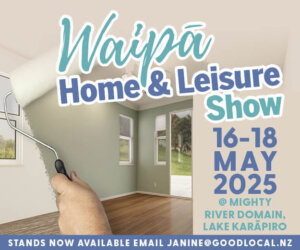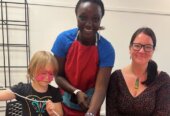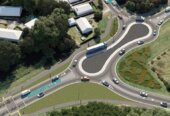
Simon operating the hoist during a helicopter rescue in difficult terrain.
The Air Desk is a national air ambulance helicopter service launched in Auckland seven months ago. It effectively centralises the dispatch and co-ordination of all emergency air ambulance helicopter resources throughout the country.
As each call for service comes in, it is assessed by Air Desk staff against a specific set of criteria. The helicopter closest to an incident might not be the best response option; questions asked as each call comes in provide information on location, terrain, weather conditions and patient requirements, and determine both the type of helicopter to be dispatched and the make-up of the crew.
The concept sees the helicopter team working closely with land-based response teams, making the final mix one that is streamlined, cost-effective and super-efficient in terms of getting exactly the right kind of help where and when it is needed.
“The reality is that each air rescue has to be able to be justified in terms of cost,” Simon explains. “It might take five minutes to get the information at the outset, but that five minutes could save an additional 30 vital minutes down the track – it could be the difference between life and death.”
Simon has an extensive record in the air rescue service in this country, both sea and land-based. He found his way into the St John network about two-and-a-half years ago, and was approached soon afterwards to help establish the Air Desk.
“It’s taken around two years to set up. I’m now working with the operators as a liaison between the ambulances and the operators, and doing some of the training,” he said. “I’m also the liaison between agencies such as ACC and St John, helping co-ordinate the rescue service activities and resolving any problems that might arise.”

Simon heads up to Auckland for a couple of days a week on Air Desk activities. Much of the rest of his time in Cambridge is now given to firming up local connections and volunteering with the Cambridge Fire Brigade. There’s a strong likelihood he’ll be one of those valiant individuals who drops what they’re doing and races down to brigade HQ whenever the town siren splits the air – and, like his firefighter colleagues, it’s a commitment he gives willingly.
Simon sees it as a privilege to serve others. It’s a characteristic he has developed over many decades, and one that has put him in the forefront of some gut-churning situations.
At about 13 or 14, the Pukekohe lad joined the Port Waikato Surf Lifesaving Club.
“I always liked the sea. My PE teacher at the time was in the club and said they were looking for more youngsters to join. I did lifeguard training but also got into other stuff … I ended up jet boat driving with the Auckland Surf Lifesaving Club, mostly at Piha and Port Waikato.
“Myself and one other fellow won the New Zealand Power Boat Rescue Award at one stage. It was for getting six people in two boats out of trouble at Port Waikato.”
When the ‘rubber ducks’ came along to replace the rescue jet boats, Simon transferred to those, and in 1979, became a rescue swimmer on board the rescue helicopter based at Piha.
While still in his mid-teens, he followed his father and grandfather’s path and joined the Royal New Zealand Navy, completing his basic training in Devonport. From there he went on to do sonar training and became a navy diver, becoming one of the country’s youngest ship’s divers at just 16. A six-month exchange to Australia saw him serve with the Australian Navy escort destroyer, the HMAS Derwent, and at age 17, Simon was running the ship’s dive team.
“I was the only qualified diver on board; I had to train up the officers and others in the crew,” he said. “But we weren’t only diving. We were doing things like refuelling at sea and rescue swimming, some of it involving helicopter operations. We’d sometimes have to go overboard while the ship was doing 14 knots [almost 26kph]. Luckily, I was a strong swimmer … swam for the navy, played water polo, swam at least 1km in the pool each day.”
After Australia, Simon returned to New Zealand and joined the multi-role vessel, the HMNZS Canterbury.
“It was 1982 and the Falklands War was on. We were in Hong Kong when Muldoon said he was sending the Canterbury to the Falklands. We prepared the ship for war and were heading up the Suez Canal when we were told to go back to the Indian Ocean and relieve two British frigates that were involved in anti-piracy operations off the coast of Sudan. We ended up being away for seven months.”

An old photograph of Simon operating a jetboat during a beach rescue.
Once home, Simon returned to his earlier role. He joined the Auckland Rescue Helicopter Trust at a time when rescue helicopters were moving from providing summer and weekend cover to a full-time operation, and spent the next 23 years as crewman, crew instructor, crew chief and director of operations. In the latter role, he was managing the rescue helicopters and three fixed wing air ambulances, as well as a staff of around 90.
In the late 1980s, he spent a month in Victoria doing further training with the National Safety Council of Australia. That was around the time when rescue hoists were introduced and helicopter crews had to be trained in how to use them safely. Simon led much of that training back in New Zealand until a change in the funding structure support saw him leave the service.
Another endeavour had seen him become involved in the establishment of the Childflight NZ programme. Simon had seen the success of a similar operation in Australia and, together with paediatric specialist Dr Elizabeth Segedin, did a presentation that resulted in the launch of a service which has since saved the lives of many hundreds of children.
Simon spent most of his 38 years associated with air rescue clocking up more than 10,000 hours’ flying time out of Auckland, Hamilton, Taupo, Palmerston North, Tauranga and Rotorua. Throughout those years he was deeply embroiled in training others, and helped develop new rescue equipment.
Given the New Zealand topography and weather conditions, he takes his hat off to local operations, saying they “do a damn good job”.
“We’re at the top of our game, mainly because we have very good CRM – crew resource management, and good training. Some of the work they do around the country is just fantastic.
“I have spent time in Australia, and in the United States. I’ve looked at the way they run their rescue operations, and we’re right up there with the best of them.”
On a more personal note, Simon has found both great satisfaction and great heartache in the job.
“It really is time for me to finish up,” he said. “I’ve had a few close calls, and there’s no denying that this is a numbers game. I nearly drowned twice while trying to recover people. I’ve nearly flown into the water off the Northern Cape while flying at night, had a few close calls while hoisting, had to recover bodies from the water where they had been for a few weeks.
“I’ve helped deliver three babies in-flight, but I’ve also had a 14-year-old kid die in my arms. It’s time to put all that behind me.”
While living in Ashhurst just outside Palmerston North, Simon spent eight years with the Ashhurst Fire Brigade, working his way up to the rank of senior firefighter.
Now that he’s adjusted to life in Cambridge – a move made to accommodate a career shift for his university professor wife – he has settled in with the Cambridge Brigade.
“I really enjoy the camaraderie down there – the good male company. My years of flying are behind me, but this is great, too.”








